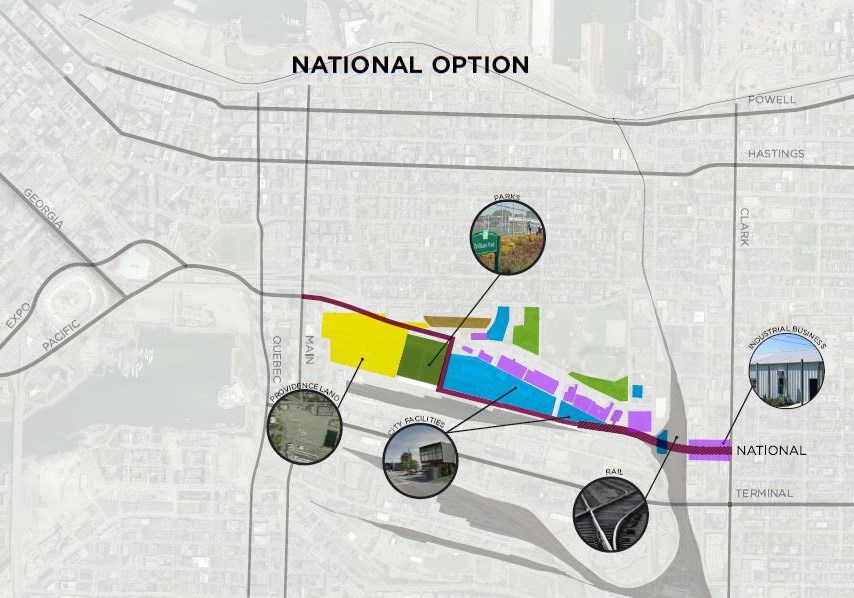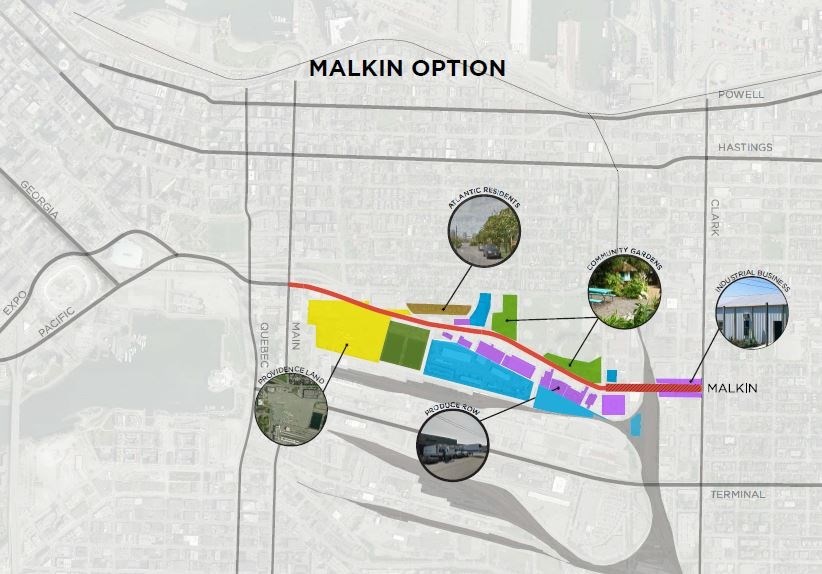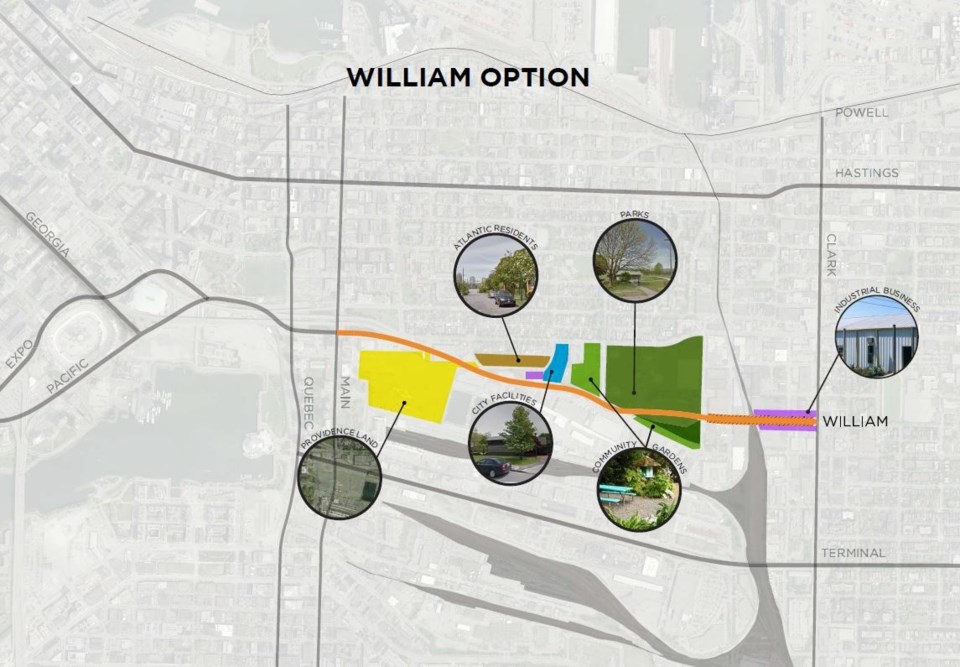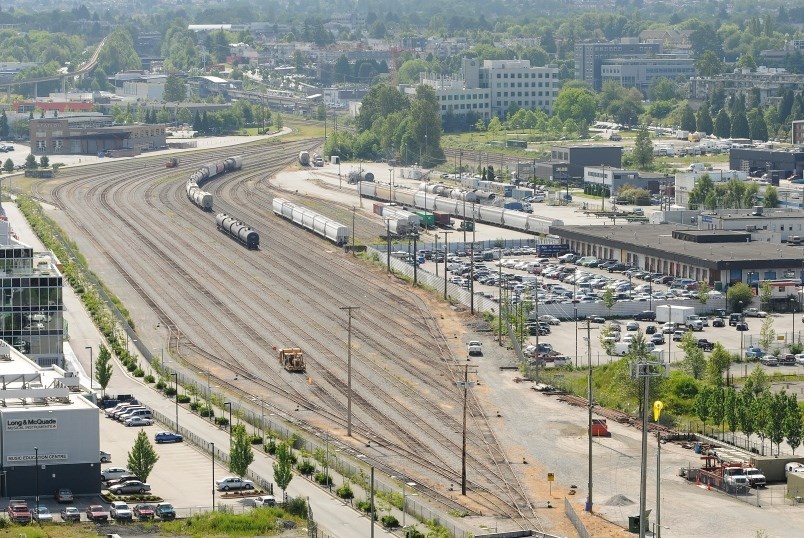There are just a few days left for residents and businesses to apply to be a part of the committee that will help determine the arterial route through the False Creek Flats.
Recruitment for the Flats Arterial Community Panel started last month and all applications must be received by Monday, Dec. 10. So far, more than 135 residents and businesses have applied to take part and 42 will be selected by random draw — 21 local residents, 15 local businesses and six city-wide residents.
Once selected, the panel members will have eight days of learning and discussion between January and April in an effort to reach a consensus on a recommended route.
Panel members must be able to attend full-day sessions on Jan. 19, 20 and 26, Feb. 9 and 23, March 9 and 10, and April 6.
The purpose of the new arterial route and overpass is to separate the rail corridor from the roadway and reduce the impact of train traffic on the area, enhance safety and alleviate congestion. City staff has been working to identify a route since the fall of 2015.
City council approved the False Creek Flats area plan last spring. It includes transitioning Prior/Venables to a local serving street once the new route is complete. The arterial was initially included as party of the area plan but was separated from that process to allow for more community input.
To date, three possible route options have been identified — National Avenue, Malkin Avenue and William Street — however each one presents its own set of challenges.
National Avenue: runs along the north edge of the new St. Paul’s Hospital site, past Trillium Park and along Thornton Street, onto National to Chess Drive. The overpass would begin at Chess Drive, through the Fire Training Facility, overtop the railway tracks, and Vernon Drive and align with Grant Street to connect with Clark Drive.

Challenges:
- Requires a longer structure to span the rail yards.
- Would not operate well for driving, cycling, walking or transit due to the proximity to East First Avenue and Clark Drive.
- Would impact the National Works Yard and require relocating the Chess Street fire training facility and heavy urban search and rescue site, which would be costly to relocate and rebuild with no suitable alternative properties identified.
Malkin Avenue: also runs along the north edge of the new hospital site and on the existing alignment of Malkin Avenue. The overpass would begin at Raymur Avenue, pass over Glen Drive and the railway tracks and align with Charles Street to connect with Clark Drive.

Challenges:
- Would remove part of the Cottonwood community gardens that are within the street right-of-way.
- Would restrict truck operations of several Produce Row businesses that currently back into loading bays and block the street.
William Street: this option was initially dismissed due to its impact on Strathcona Park (it would split a portion of the park) but those impacted by the Malkin Street option asked that it be reconsidered. This option starts in the same place as the Malkin Street option but then runs through Strathcona Park between Chess Street and Raymur Avenue. The overpass would being at Raymur, pass over Glen Drive, the railway tracks and Vernon Drive, and then align with William Street to connect with Clark Drive.

Challenges:
- Splits the southern portion of Strathcona Park.
- Requires a park board decision on whether the reconfiguration of the park boundaries and facilities is possible.
Earlier this year, some park board commissioners expressed concerns about this option.
“I’ve long been concerned that the plan moving forward does not really consider the interests of park users at Strathcona Park,” commissioner John Coupar said at a meeting back in January.
City staff will use the panel’s recommendation as significant input into the final plan, but may ask for additional technical analysis and engagement before taking a draft plan to council later next year.
To apply online visit fcfcommunitypanel.com/apply. For more information call 778-381-9121 or email hello@fcfcommunitypanel.com.
@JessicaEKerr
jkerr@vancourier.com



